
Treatment of cardiovascular disease was revolutionized by the debut of balloon catheters and coronary artery bypass grafts to unblock major arteries. Gastric bypass surgery was introduced to control weight and a long-term successful hip replacement procedure became a surgical standard.
1960
First History of the College Written
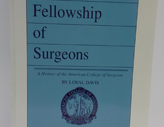
1960
First History of the College Written



Fellowship of Surgeons: A History of the American College of Surgeons, which chronicles the beginnings of the College and the development and progress of surgery in America from 1904 to 1960, was published and later reprinted seven times. Author Loyal Davis, MD, FACS, a neurosurgeon and chairman of the department of surgery at Northwestern University, Chicago, was a key player and close observer of many of the events he wrote about.113 As a former President of the College (1961–1962) and Editor of its journal, Surgery, Gynecology & Obstetrics, for 44 years, Dr. Davis also was a significant player in College history. For instance, his comments about the growing problem of fee-splitting at the College's 1952 press conference drew heavy fire from members of the Chicago Medical Society. Dr. Davis was also a confidant of College Founder and long-time Director, Franklin H. Martin, MD, FACS, even serving as Dr. Martin's personal physician when he was recovering from a stroke.114
Citations
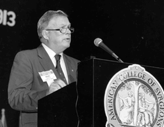
1961
First Successful Repair of Basilar Artery Brain Aneurysm
1961
First Successful Repair of Basilar Artery Brain Aneurysm



The first successful treatments of basilar artery aneurysms in the brain were reported by Canadian neurosurgeon Charles G. Drake, MD, FACS, FRCS(C), and colleagues in the Journal of Neurosurgery.115 Brain aneurysms are always a challenge to treat, but none more tricky or dangerous than posterior circulation aneurysms since these maladies are often hard to reach or in a dangerous position next to the brainstem or cerebellum. In addition, such aneurysms are relatively rare, meaning that few surgeons had ever attempted treatment. In the late 1950s, a colleague stated that "no one in the world except Dr. Drake would touch a ruptured basilar aneurysm."116 But the daunting odds of operating on these aneurysms—even Dr. Drake lost four of his first five patients—were overshadowed by the bleak prognosis of not treating afflicted patients at all. Aneurysms can now be treated effectively and safely throughout the world, largely due to Dr. Drake's study and subsequent work.117 He was chairman of the department of surgery at the University of Western Ontario, London, ON, Canada,118 and also was ACS President from 1984 to 1985.119
Citations
1961
Balloon Embolectomy Catheter Debuts

1961
Balloon Embolectomy Catheter Debuts



A new medical device called the balloon embolectomy catheter was used by its inventor, Thomas J. Fogarty, MD, FACS, to successfully remove an embolus,120 or blood clot, from a human patient. The device, which consisted of a thin tube with a balloon on its tip, was threaded through a blood vessel and pushed through the clot; the balloon was expanded and the clot was displaced as the balloon was drawn back through the vessel. Dr. Fogarty conceived and designed the device while a medical student at the University of Cincinnati Medical School. He built the first prototype in his attic using his boyhood fly-tying kit to attach the fingertip of a latex surgical glove to a hollow tube.121 His balloon catheter procedure was the first successful example of "minimally invasive" vascular surgery—also called angioplasty—which has saved tens of millions of lives and has improved the health of many more. He was the recipient of the College's 2001 Jacobson Innovation Award.122
Citations
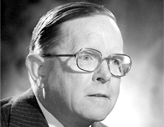
1962
Dr. Charnley's Hip Replacement Becomes Established Procedure
1962
Dr. Charnley's Hip Replacement Becomes Established Procedure







![Used with permission from [Lars Neumann, Knud Gade Freund, K. Harry Sorenson; Total Hip Arthroplasty with the Charnley Prosthesis in Patients Fifty-five Years Old and Less. Fifteen to Twenty-one-Year Results*. The Journal of Bone & Joint Surgery. 1996 Jan;78(1):73-9] though no endorsement by the publisher or author(s) of the work should be presumed](img/modal/1960/thumbs/1962-6.jpg)
After years of research, Sir John Charnley, MD, FACS (Hon),123 successfully implanted a two-component hip replacement made of metal and plastic, which created an artificial joint similar to a natural one. As with many successful inventions, the Charnley hip replacement had many fits and starts. For instance, in attempting to keep friction within the device to a minimum, Dr. Charnley initially used a self-lubricating substance called polytetrafluoroethylene (PTFE). Unfortunately, after the device was implanted in patients, PTFE wore out unexpectedly fast and was rejected as a foreign substance by patients' bodies.124 Finally, a new type of plastic was used, and this time the Charnley hip replacement procedure became a practical reality and a gold standard surgical treatment. In fact, clinical and radiographic success of the Charnley procedure was confirmed in patients for as many as four decades after the early procedures took place. Even so, Dr. Charnley continued to refine his device and procedure over the next few decades. The Charnley total hip replacement technique has gone on to benefit millions of patients throughout the world.
Citations
1963
"General Hospital" Premieres on ABC
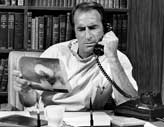
1963
"General Hospital" Premieres on ABC
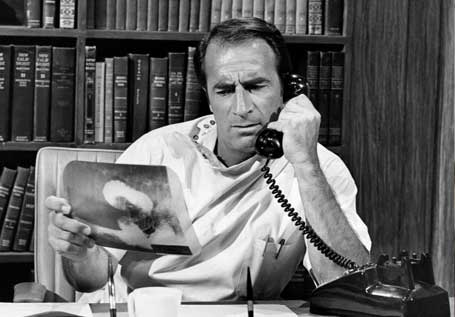
The longest-running American soap opera and forerunner of numerous popular television dramas set in hospitals, "General Hospital" premiered on ABC. The television show began as a drama centered on the people who worked inside General Hospital, a city hospital in New York. The hospital has been all but phased out in recent years.
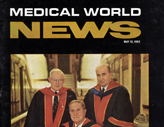
1963
Medical World News Features College's Golden Anniversary
1963
Medical World News Features College's Golden Anniversary




In an in-depth story titled "Surgeons' Golden Anniversary," the Medical World News featured the College's first 50 years, how the organization had worked to improve surgical standards, what its vision was for the future, and the College's leadership at the time, including then President Loyal Davis, MD, FACS, and Executive Director John Paul North, MD, FACS.
1964
First Coronary Artery Bypass Graft Procedure Performed
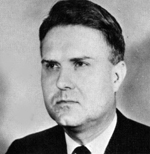
1964
First Coronary Artery Bypass Graft Procedure Performed

After an unsuccessful attempt at coronary endarterectomy, H. Edward Garrett, MD, and colleagues performed the first successful coronary artery bypass graft (CABG) procedure with use of a large thigh (saphenous) vein. Michael DeBakey, MD, FACS, called CABG surgery an "act of providence" because it was not planned, but was performed as a "rescue" operation. This case was not reported for seven years in order to have a reliable follow-up outcome; Dr. Garrett and colleagues believed that it was not enough simply to perform the operation, but to also make sure the patient did well postoperatively.125 Once results were published in the Journal of the American Medical Association, the demonstration of long-term success gave high credibility to the concept of coronary revascularization and the procedure became widespread to the benefit of millions of patients with blood clots and blocked coronary arteries.126
Citations

1965
President Lyndon B. Johnson Signs the Groundbreaking Medicare Law
1965
President Lyndon B. Johnson Signs the Groundbreaking Medicare Law
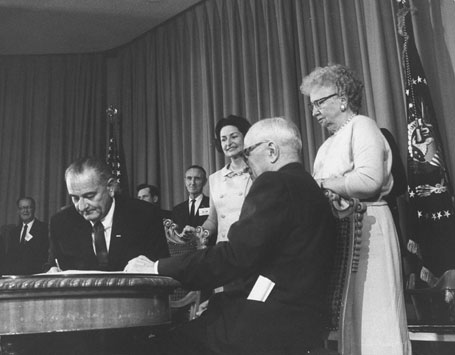
This new health care legislation established a national social insurance program, administered by the U.S. federal government for elderly Americans.
1965
Performing Surgical Procedures is Popularized with "Operation" Game
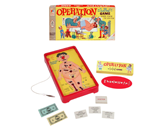
1965
Performing Surgical Procedures is Popularized with "Operation" Game

The battery-operated game, "Operation," was invented by John Spinello, an engineering student at the University of Illinois.127 It consists of an "operating table," lithographed with a comic likeness of a patient (nicknamed "Cavity Sam") with a large red light bulb for his nose. On the surface are a number of openings that reveal fictional and humorously named ailments made of white plastic. If a player hits the sides of the cavity during an "operation," the patient's nose lights up. Over the years there have been different versions of the "skill game," including versions featuring "The Simpsons," "Sponge Bob Square Pants," and "Iron Man."
Citations
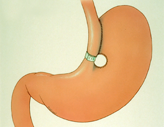
1966
First Gastric Bypass Procedure for Weight Reduction Performed
1966
First Gastric Bypass Procedure for Weight Reduction Performed




After observing that patients who had undergone gastric resections for peptic ulcer disease tended to lose weight that was difficult to regain after surgery,128 University of Iowa surgeon, Edward E. Mason, MD, FACS, had the idea to "take the undesirable effect of gastric resection, which was weight loss, and use it for a desirable effect to treat obesity."129 Starting with just a few patients, Dr. Mason's gastric bypass procedure soon gained attention as success stories of men and women who shed significant amounts of their excess weight and regained control over their eating habits began to appear in newspapers around Iowa and the nation. Dr. Mason, who is considered the "Father of Obesity Surgery," also was instrumental in establishing the American Society of Bariatric Surgery and the International Bariatric Surgery Registry.130
Citations
1967
First Liver Transplant Performed
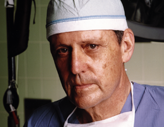
1967
First Liver Transplant Performed



After more than a decade of laboratory research Thomas E. Starzl, MD, FACS, performed the first successful human liver transplantation at the University of Colorado Health Sciences Center, Denver. Dr. Starzl viewed liver transplant as a last resort for patients in the end stages of liver disease. Although he made earlier attempts to transplant the liver, the patients' systems rejected the organ due to the lack of effective drugs to suppress the patients' immune response systems. After gaining experience with kidney transplants and more effective immunosuppressive drugs, Dr. Starzl finally achieved success with liver transplants. Over the next 13 years, he and his team performed 200 liver transplants and 1,000 kidney transplants at Colorado General and Denver Veterans Administration Hospitals. Dr. Starzl was the recipient of the College's 1995 Jacobson Innovation Award.131
Citations

1968
Infant Kept Alive Through Intravenous Feeding
1968
Infant Kept Alive Through Intravenous Feeding

Demonstrating that an infant could receive all nutrients by vein and still grow and develop, Stanley J. Dudrick, MD, FACS, published a benchmark report in the Journal of the American Medical Association on the successful use of intravenous feeding. While a surgical resident at the Hospital of the University of Pennsylvania, Philadelphia, Dr. Dudrick came up with the idea of concentrating intravenous nutrients for direct delivery into the central venous circulation. He demonstrated the validity of his idea by successfully growing beagle puppies, one named Stinky, from six weeks of age to adulthood, giving nutrients entirely by vein. Through a series of experiments, he refined the ability to alter electrolytes, protein-to-calorie ratios, and the content of vitamins and minerals, resulting in normal growth and development in a variety of animal models. Dr. Dudrick and his team successfully applied the technique to a human infant born with almost complete small bowel atresia and the child grew and developed normally.132 This case marked a turning point in clinical medicine and has been recognized as one of the most important advancements in surgery during the past century.133 Dr. Dudrick was the recipient of the College's 2005 Jacobson Innovation Award.134
Citations



